FRIB-TA Supported Scientists
The FRIB Theory Alliance supports young scientists through the FRIB Bridge Program and the National FRIB Theory Fellow program.
Current Theory Bridge Faculty/Staff
Dr. Pooja Siwach, hosted by the University of Arizona [siwach@arizona.edu]
start date 08/2025
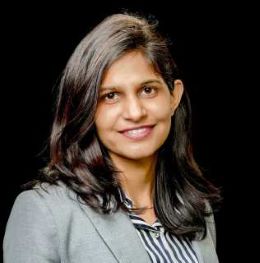
Dr. Siwach’s research explores the use of quantum computing and quantum information science to address open problems in nuclear physics and astrophysics. She develops noise-resilient quantum simulation protocols, efficient encodings, and symmetry-projection methods to enable realistic simulations of nuclear structure and neutrino many-body dynamics on near-term and next-generation quantum devices. She also employs quantum information tools, in combination with tensor network methods, to study collective neutrino oscillations in environments such as core-collapse supernovae and the early universe. Complementing these efforts, Dr. Siwach investigates exotic nuclei at the limits of stability and quantum correlations in nuclear fission, establishing connections between fundamental nuclear structure and astrophysical phenomena.
Prof. Christian Drischler, Ohio University [drischler@ohio.edu] start date: 8/2022
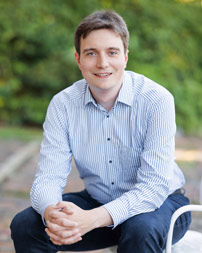
Dr. Drischler’s research interests include applications of chiral effective field theory and many-body perturbation theory to derive microscopic constraints on the nuclear matter equation of state and the structure of neutron stars. He has been developing Bayesian methods and fast & accurate emulators for scattering (and reaction) observables based on eigenvector continuation. These tools allow for a rigorous quantification of effective field theory uncertainties and statistically robust comparisons between nuclear theory, observational, and experimental constraints on the EOS obtained in the FRIB era. Dr. Drischler is active in the BUQEYE collaboration and the NSF Physics Frontier Center “Network for Neutrinos, Nuclear Astrophysics, and Symmetries” (N3AS) These research interests have many synergies with FRIB’s experiments to constrain nuclear matter properties, such as the approved “The Isoscalar Giant Monopole Resonance in 132Sn: Implications on the Nuclear Incompressibility” (21056) led by Notre Dame.
Research highlights: [1], [2], [3], [4], [5]
Prof. Kevin Fossez, Florida State University [kfossez@fsu.edu] start date: 8/2021
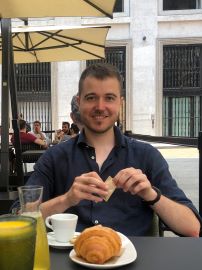
The research developed by Dr. Fossez explores the most exotic nuclei ever created. Fossez works on the unification of nuclear structure and reactions. This problem can be addressed either by extending ab-initio capabilities to continuum states, to increase predictive power in unknown regions of the nuclear chart, or by developing novel and more precise approaches at lower energy that take into account the existence of emergent phenomena in nuclei while still being properly connected with the more fundamental levels of description. The approaches developed allow the study of nuclear structure at the drip lines through energy spectra, resonance widths, radii, and density profiles in halo structures.
Prof. Sebastian König, North Carolina State University [skoenig@ncsu.edu] start date: 1/2020
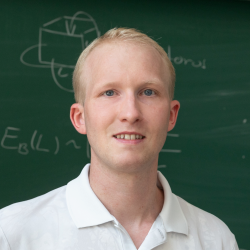
Dr. König's research covers a range of topics in theoretical low-energy nuclear
physics, centered around effective field theories (EFTs) applied to few-nucleon
systems, finite-volume techniques, and other aspects of ab initio calculations.
Finite-volume calculations are a powerful and versatile method to treat both bound
and unbound systems, giving access in particular to otherwise difficult to obtain
asymptotic properties of wavefunctions. Together with his research group at NC
State University, Dr. König combines formal theory developments with efficient
numerical simulations of quantum systems, covering the few-nucleon sector as well
heavier systems with effective few-body character. At the center of this work are
studies of unstable states (resonances) with different methods, and the development
of new frameworks to describe nuclear halo and cluster states.
Research highlight: [1]
Current Theory Fellows
Dr. Francesca Bonaiti, hosted by Oak Ridge National Laboratory [bonaiti@frib.msu.edu] start date 10/2024
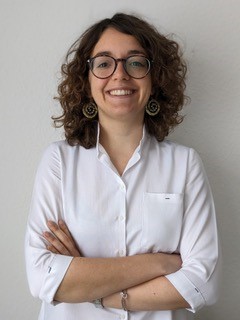
Understanding the nature of neutron stars and the origin of elements by studying properties of finite nuclei is at the heart of my research. I investigate electromagnetic reaction observables, as electric dipole polarizabilities and isoscalar monopole resonances, which strongly correlate with parameters of the nuclear matter equation of state. My goal is to extend ab initio calculations of these quantities to extremely neutron-rich nuclei, where unique constraints on the nuclear equation of state can be obtained in synergy with future experiments at FRIB and FRIB 400. My research in nuclear many-body physics will benefit also other FRIB research programs at the interface between nuclear structure and astrophysics, for instance studies of beta-decay rates, which are a key input for nucleosynthesis simulations. I am also interested in time-dependent approaches to the description of nuclear collisions.
Dr. Linda Hlophe, hosted by Los Alamos National Laboratory [hlophe@frib.msu.edu] start date 8/2023
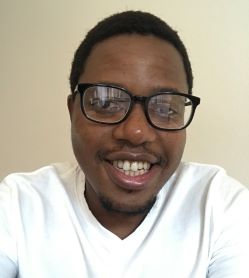
Developing accurate theoretical descriptions of nuclear reactions involving rare isotopes is at the core of my research. Such reactions play a crucial role in studying the properties of exotic nuclei and extracting information needed to understand their synthesis in explosive astrophysical events. I primarily focus on developing state-of-the-art techniques for describing direct nuclear reactions (e.g., transfer, breakup, capture, etc.) involving rare isotopes by leveraging recent advances in ab initio theory and few-body methods. Accurate theoretical descriptions of these reactions are essential for reliably extracting structure information from the many reaction measurements to be carried out at FRIB. Additionally, the improved predictive power will help in the planning of future experiments as well as making predictions for reactions that are beyond experimental reach.
Dr. Grigor Sargsyan, hosted by FRIB/Michigan State University [sargsyan@frib.msu.edu] start date 8/2023
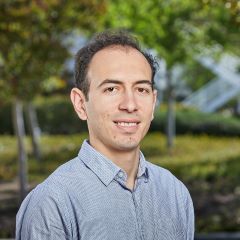
Dr. Grigor Sargsyan models properties of atomic nuclei using modern theoretical and computational techniques. His work on nuclear reactions aims to include information about nuclear structure to give predictive power to the theoretical calculations of reaction observables. In addition, Dr. Sargsyan uses nuclear shell model and the ab initio symmetry-adapted no-core shell model to study electromagnetic transitions and beta decays in nuclei with a particular interest in higher-order effects that are important for precision beta-decay experiments aiming to probe physics beyond the Standard Model.
Research highlight: [1]
Dr. Xilin Zhang, hosted by FRIB/Michigan State University [zhangx@frib.msu.edu] start date: 7/2021
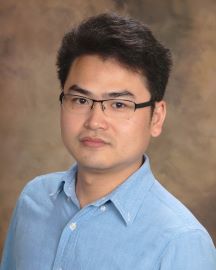
Dr. Xilin Zhang mainly focuses on studying nuclear scattering and reactions at both macroscopic and macroscopic microscopic levels. His first topic is developing ab initio calculations of low-energy nuclear scattering and reactions (and properties of weakly-bound nuclei) that can treat medium-mass nuclei. For example, the method has been used to compute neutron-O-24 scattering. As his second topic, he has been practicing Bayesian inference in analyzing low-energy nuclear reaction data [e.g., Be-7(p, g) B-8] since 2014. He is a member of the BUQEYE collaboration. His third topic is developing fast emulators for solving three-body (cluster) scattering and reaction problems (such as deuteron—nucleus reactions). These emulators will be extremely useful for controlling theory errors in analyzing experimental data by enabling implementations of full reaction theory in the analysis.
He is also interested in new-physics searches (e.g., the Atomki anomaly seen in one of Be-8’s nuclear transitions). In addition, he is studying the potential benefits of bringing fundamental physics measurements to outer space in light of the increasing commercial activity there.
Past Bridge Faculty
Prof. Maria Piarulli, Washington University [mpiarulli@physics.wustl.edu] 2018 - 2024
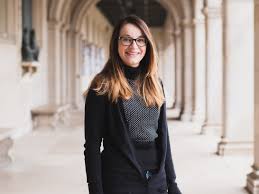
Dr. Piarulli’s research aims to develop theoretical and computational methods to accurately explain nuclear properties emerging in light nuclei and large systems like neutron stars. A particular strength of Piarulli’s work relevant to the FRIB program is the formulation and the implementation of realistic nuclear interactions and electroweak currents that are the main input of sophisticated computational methods. She uses Quantum Monte Carlo applications to study a wide range of topics that include calculations of energy levels, charge radii, one- and two-nucleon spatial and momentum distributions, and elastic form factors; calculations of electroweak transitions and neutrinoless double beta decay matrix elements; calculations of the equation of state of pure neutron matter.
Research highlight: [1]
Prof. Saori Pastore, Washington University in St. Louis [saori@wustl.edu] 2018-2022
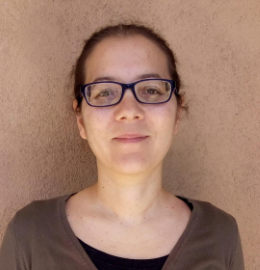
Understanding the fundamental interactions in nature and their symmetries is at the heart of the research being developed by Dr. Pastore. She explores the effect of electroweak interactions, using Quantum Monte Carlo techniques to determine nuclear structure and reactions, including electromagnetic moments, electromagnetic- and beta-decays, weak transition matrix elements, muon captures, electron- and neutrino-scattering. Her research connects strongly with the fundamental symmetries program planned for FRIB.
Research highlight: [1]
Past Theory Fellows
Dr. Chien-Yeah Seng, The University of Tennessee, Knoxville
[cseng@utk.edu]
FRIB-TA Fellow at the University of Washington 2022-2025
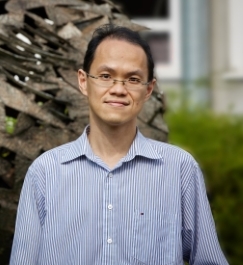
Dr. Seng's research lies at the interface between Quantum Chromodynamics (QCD) and the electroweak sector of the Standard Model (SM). He works on interesting problems in hadron and nuclear physics that directly impact the forefront of searches of physics Beyond the Standard Model (BSM), in particular through precision tests of the SM. One of his recent goals is to perform high-precision calculations of the SM theory inputs in hadron and nuclear beta decays that could further sharpen the signal of the observed anomalies in the determination of the quantities Vud and Vus, which is now one of the most promising avenue to search for BSM physics. His research is highly relevant to the future FRIB experiments that involve the measurement of lifetime and various correlation coefficients in the beta decay of rare isotopes.
Research highlight: [1]
Dr. Anna McCoy, Argonne National Laboratory
FRIB-TA Fellow at Washington University in St. Louis, 2022-2023
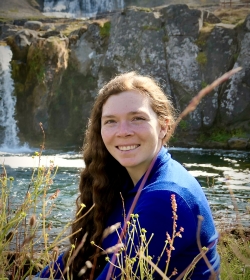
Dr. Anna McCoy’s research focuses on developing accurate, computationally tractable ab initio methods for predicting properties of nuclear structure and reactions. She then uses these predictions to gain insight into the underlying symmetries and correlations which give rise to nuclear collective behavior.
Dr. Chloë Hebborn, Laboratoire de physique des 2 Infinis: Irène-Joliot Curie (IJClab) [hebborn@ijclab.in2p3.fr], FRIB-TA Fellow at LLNL, 2020-2023
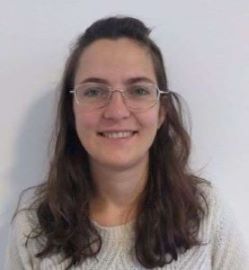
Dr. Hebborn's research focuses on the development of accurate theoretical descriptions of reactions involving exotic nuclei for the study of nuclear structure far from stability and the predictions of reaction rates of astrophysical interest. Her work touches on both improvements of few-body models for direct reactions, such as breakup, knockout, transfer, and ab initio predictions for reactions of astrophysical interests. By bringing together these two descriptions through the development of ab initio optical potentials, her goal is to strengthen the link between reaction observables and the underlying nuclear structure. Her research will strongly benefit the analysis of reaction measurements, the planning of future experiments at FRIB and improve our predictive power for reactions that cannot be reached experimentally.
Dr. Christian Drischler, Ohio University
[drischler@ohio.edu]
FRIB-TA Fellow at MSU, 2020-2022
Dr. Drischler’s research interests include applications of chiral effective field theory and many-body perturbation theory to derive microscopic constraints on the nuclear matter equation of state and the structure of neutron stars. He has been developing Bayesian methods and fast & accurate emulators for scattering (and reaction) observables based on eigenvector continuation. These tools allow for a rigorous quantification of effective field theory uncertainties and statistically robust comparisons between nuclear theory, observational, and experimental constraints on the EOS obtained in the FRIB era. Dr. Drischler is active in the BUQEYE collaboration and the NSF Physics Frontier Center “Network for Neutrinos, Nuclear Astrophysics, and Symmetries” (N3AS) These research interests have many synergies with FRIB’s experiments to constrain nuclear matter properties, such as the approved “The Isoscalar Giant Monopole Resonance in 132Sn: Implications on the Nuclear Incompressibility” (21056) led by Notre Dame.
Research highlights: [1], [2], [3]
Dr. Kevin Fossez, Florida State University
[kfossez@fsu.edu]
FRIB-TA Fellow at ANL, 2019-2021
The research developed by Dr. Fossez explores the most exotic nuclei ever created. Fossez works on the unification of nuclear structure and reactions. This problem can be addressed either by extending ab-initio capabilities to continuum states, to increase predictive power in unknown regions of the nuclear chart, or by developing novel and more precise approaches at lower energy that take into account the existence of emergent phenomena in nuclei while still being properly connected with the more fundamental levels of description.
Research highlights: [1]
Dr. Diego Lonardoni, LANL
[lonardoni@lanl.gov]
FRIB-TA Fellow at LANL, 2015-2020
The research carried out by Dr. Lonardoni contributes to building a predictive understanding of nuclear systems characterized by high neutron-to-proton imbalance, from neutron-rich nuclei to neutron stars, grounded in high-quality nuclear forces and ab-initio theory, including a complete assessment of all uncertainties associated with a nuclear many-body calculation. His results have impact on several FRIB experimental programs as well as other U.S. national laboratories.
Research highlights: [1], [2], [3], [4], [5], [6]
Dr. Gregory Potel Aguilar, LLNL
[potelaguilar1@llnl.gov]
FRIB-TA Fellow at MSU, 2016-2019
Dr. Potel’s research is in reaction theory and in particular reactions involving deuterons. Deuteron-induced transfer reactions are a popular tool in nuclear physics and recent applications of this probe have included exploring the structure of exotic isotopes and using them as an indirect tool for neutron capture processes. This is the context of Potel's work, which tightly connects with many FRIB experimental programs.
Research highlights: [1]